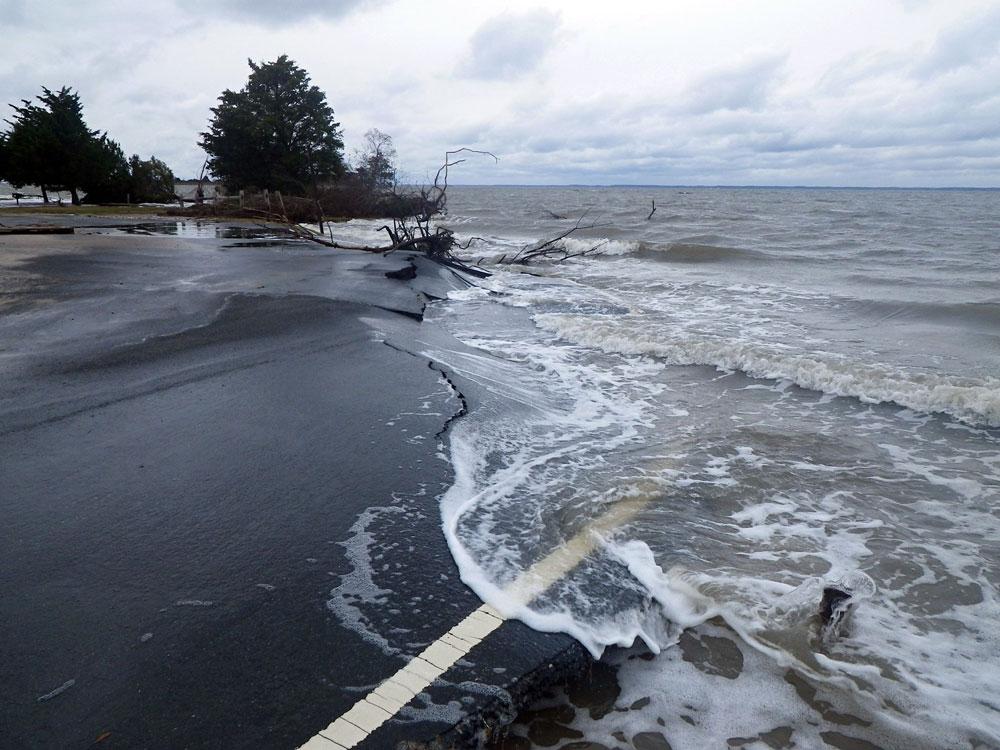
June 19, 2019; New York Times
What do Jacksonville, New York City, Virginia Beach, Galveston, and Charleston have in common? They all face billion-dollar-plus price tags between now and 2040 if they want to ensure that their residents remain above water, as global heating raises sea levels.
Specifically, estimated costs for these five cities are as follows:
- Jacksonville, Florida – $3.5 billion
- New York, New York – $2.0 billion
- Virginia Beach, Virginia – $1.7 billion
- Galveston, Texas – $1.1 billion
- Charleston, South Carolina – $1.0 billion
This is just one of the key findings, reports Christopher Flavelle in the New York Times, of a new study from the Center for Climate Integrity, an initiative of the Washington, DC-based nonprofit, the Institute for Governance and Sustainable Development.
As Flavelle explains, other cities also face high seawall costs. Rounding out the top ten are Tampa, Florida; Barnstable Town, Massachusetts, Corpus Christi, Texas; St. Petersburg, Florida; and New Orleans. Each would have to spend over $700 million to protect their residents from anticipated coastal flooding. More broadly, the report finds 241 cities of 25,000 people or more will require at least $10 million worth of sea walls by 2040 “just to protect against a typical annual storm,” writes Flavelle. And if seawalls were built in every coastal community, the national cost by 2040 would be not $42 billion, but $400 billion.
As for per-capita costs, the top ten cities are listed below:
Sign up for our free newsletters
Subscribe to NPQ's newsletters to have our top stories delivered directly to your inbox.
By signing up, you agree to our privacy policy and terms of use, and to receive messages from NPQ and our partners.
- Galveston, Texas—$21,282
- Barnstable Town, Massachusetts—$20,062
- New Smyrna Beach, Florida—$14,946
- Texas City, Texas—$12,603
- Gloucester, Massachusetts—$12,164
- Dunedin, Florida—$10,922
- Port Arthur, Texas—$10,289
- Hilton Head Island, South Carolina—$9,632
- Atlantic City, New Jersey—$9,327
- Coral Gables, Florida—$8,442
Center director Richard Wiles contends that “this is the next wave of climate denial—denying the costs that we’re all facing.” If you live in a coastal community, you can look up the anticipated cost in your city here.
Of course, there may be less expensive methods for minimizing flood risk than sea walls, such as moving away from flood-prone areas. But, as Flavelle points out, there are also “additional and costlier steps that will be required even with sea walls, such as revamping sewers, storm water, and drinking water infrastructure.”
Some cities have begun to plan for the anticipated sea level rise. As Flavelle details:
In March, New York City Mayor Bill de Blasio proposed a $10 billion project to protect a slice of Lower Manhattan from flooding, asking the federal government to pay for it. In April, the Army Corps of Engineers said the levee system around New Orleans, upgraded after Hurricane Katrina at a cost of $14 billion, is sinking, and could become inadequate in as little as four years. In May, officials in Charleston held a public meeting on where to find the estimated $2 billion the city needs to prepare its drainage and water infrastructure for climate change.
The bottom line: as the costs of global heating—including greater disaster frequency and intensity, and rising sea levels—become clearer, nonprofits and movement activists will need to be engaged. As Marion McFadden, who directs Enterprise Community Partners’ resiliency work, recently told NPQ, no one should be “surprised by the changes that communities go through.” McFadden adds that centering decision-making “to address the unmet needs of low-income people” will be critical if past policies that have favored whiter and wealthier residents are not to be repeated.—Steve Dubb













